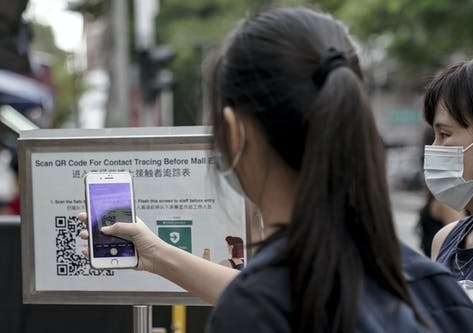Professor Raina MacIntyre examines National Cabinet’s review into contact tracing.

The people at highest risk of getting infected with SARS-CoV-2, the virus that causes COVID-19, are close contacts of infected cases. So tracking these close contacts, and quarantining them so they can’t infect others, is key to efficient epidemic control. Sometimes we also have to track contacts who attend venues where super-spreading occurs.
Victoria’s second wave prompted the National Cabinet to order a review into contact tracing, which became a flashpoint during the crisis.
The report, by Australian Chief Scientist Alan Finkel and released on Friday, broadly makes the following recommendations:
establish performance metrics on the speed of testing and contact tracing
states and territories should pursue their own contact tracing systems, but have a national digital data exchange mechanism
invest in technology, automation and digital systems for outbreak management
strengthen the public health workforce, training and career tracks, as well as surge capacity for outbreaks
go hard, go early and never fall behind
maintain other public health measures such as social distancing, personal hygiene and early testing; and use waste-water surveillance for early warning of community transmission
engage and communicate with communities, including those in higher risk groups and those with with diverse cultural or language needs.
We must invest in the public health workforce
The report recognises the efforts of all jurisdictions in continually improving mechanisms for control of COVID. It also recognises some of the challenges posed by confusing and inconsistent terminology, and also in differing testing protocols between jurisdictions.
It also reviews various digital technologies used to help with outbreak management across Australia, some of which are linked to pathology testing, and others to attendance at public venues, schools or workplaces. In Western Australia, for example, the G2G app enables facial recognition and mobile phone location data to help police to enforce quarantine.
Another strength of the report is the recognition of the public health workforce as a distinct and equally important part of the pandemic response as the clinical workforce.
Early in the pandemic, we did well to expand ICU beds and ventilator capacity. However, the requirements for public health capacity during pandemics has long been neglected. Victoria was under-resourced compared to other states and had fewer trained personnel for contact tracing and outbreak response, so when clusters began occurring in June, authorities were unable to stamp them out as NSW had done.
The report recommends surge capacity but no specific strategies. One strategy could involve harnessing the thousands of Bachelors or Masters of Public Health students and graduates around Australia. A course on contact tracing and surveillance within these degrees could create a large surge capacity of people with more baseline public health knowledge, compared with other options used in Victoria.
Read more: Where did Victoria go so wrong with contact tracing and have they fixed it?
Manual contact tracing can’t keep up with exponential growth
However, while Victoria was compared to NSW unfavourably, NSW has not yet been stressed with substantial daily community case numbers, and may also be unable to keep up without digital tracing.






